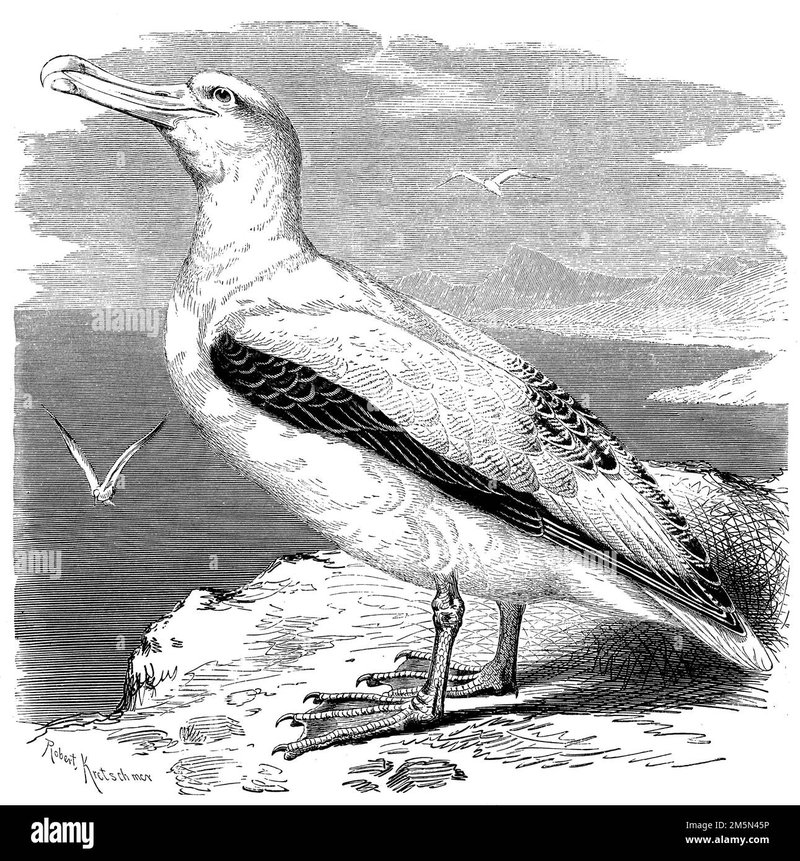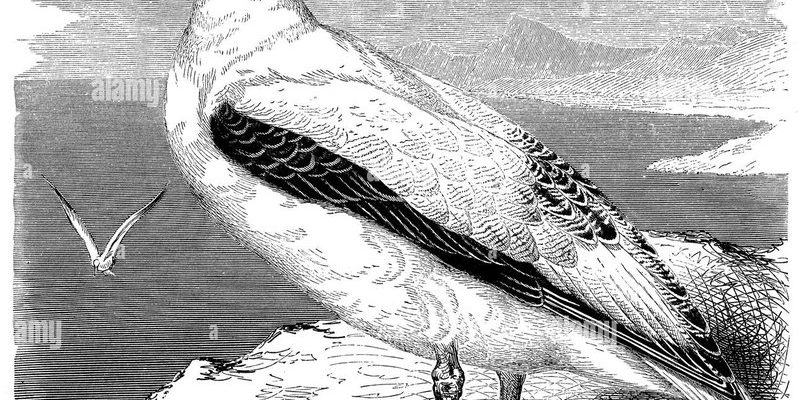
Think of the albatross as the ultimate ocean wanderer, almost like a seasoned sailor navigating the vast and unpredictable seas. Their journey through time is a testament to adaptation and survival, showing how they’ve evolved to master the art of flying long distances over open water, often traveling thousands of miles without ever touching land. So, let’s dive deep into their evolutionary past and discover the remarkable journey of the albatross!
What Makes the Albatross Unique?
Albatrosses are often celebrated for their impressive wingspans, which can reach up to 12 feet! This makes them one of the largest flying birds in the world. But what really sets them apart is how they fly. Albatrosses have a technique known as dynamic soaring, which allows them to harness the wind currents above the waves. By rising on wind updrafts and then diving down, they can travel vast distances with minimal effort.
Feeding habits also play a crucial role in their uniqueness. These birds primarily feed on fish, squid, and krill, which they catch by skimming the surface of the ocean or diving. Their long-range foraging not only sustains them but helps keep their populations robust.
Moreover, their social behaviors are intriguing. Albatrosses often mate for life and engage in elaborate courtship displays that can last for several years before they actually breed. This strong bond between partners shows how the albatrosses have evolved socially, just as much as they have physically.
The Albatross Family Tree
Let’s take a step back and look at where albatrosses fit into the bird family tree. Albatrosses belong to the order Procellariiformes, which also includes petrels and shearwaters. Within this order, they are part of the family Diomedeidae. The family split from other seabirds around 30-40 million years ago, a time when the Earth’s continents were very different from today.
Interestingly, fossil records show that ancient albatrosses existed as far back as the late Eocene epoch, over 30 million years ago. These early birds had many features that resemble modern albatrosses, indicating a long lineage of adaptations to life at sea. One of the most significant differences was in their size; some ancient species were even larger than today’s giants!
As the continents drifted and oceans expanded, albatrosses spread to various regions. This geographic isolation played a vital role in their evolution, leading to several distinct species we see today, each adapted to specific oceanic conditions.
Key Adaptations of Albatrosses
The evolutionary history of the albatross is rich with adaptations that have helped them thrive in their ocean domain. Here are a few key adaptations that stand out:
- Wing Structure: Albatross wings are long and narrow, which is perfect for gliding. This allows them to cover huge distances without tiring easily.
- Body Fat: A thick layer of body fat serves as an energy reserve, crucial when food is scarce on long flights.
- Salt Glands: Albatrosses have specialized glands that help them excrete salt, allowing them to drink seawater, which is vital for their hydration while out at sea.
These adaptations are not just for show. They help the albatross navigate the vast and sometimes harsh environments of the open ocean, making them expert survivors.
Impact of Climate Change on Albatrosses
You might be wondering how modern changes, especially climate change, affect these majestic birds. Well, the effects are profound. As ocean temperatures rise and currents shift, the fish and squid that albatrosses rely on for food are also changing their patterns. This can lead to food shortages, forcing albatrosses to travel further and expend more energy in search of sustenance.
Additionally, extreme weather events, such as storms, can be more disruptive during breeding seasons. With their breeding habits tied closely to specific environmental conditions, any shift can have a ripple effect on their populations.
Research shows that some species of albatrosses are declining due to these factors. It’s a stark reminder of how deeply interconnected our planet’s systems are and how vital it is to protect these remarkable birds.
The Role of Albatrosses in Ecosystems
Albatrosses aren’t just fascinating creatures; they play a crucial role in their ecosystems. By feeding on fish and squid, they help maintain balance in the marine food web. Their foraging habits can influence fish populations, which in turn affects the creatures that prey on those fish.
Moreover, when albatrosses die, their bodies provide nutrients to the seabed, supporting a myriad of marine life. It’s a beautiful cycle of giving and receiving that underscores the importance of every species in the ecosystem.
As apex consumers, their presence indicates a healthy ocean environment. When we see albatrosses thriving, it’s a sign that our oceans are in good shape.
Conservation Efforts for Albatrosses
With their populations at risk, various conservation efforts are underway to protect albatrosses and their habitats. Organizations like the Albatross Task Force focus on reducing bycatch in fisheries, which is a significant threat to their survival. By implementing bird-friendly fishing gear and practices, they’re helping to safeguard these incredible birds.
Legal protections are also crucial. Many albatross species are protected under international agreements, fostering collaboration between countries that share their habitats. This global approach is essential because albatrosses travel across vast oceans, requiring coordinated efforts for effective conservation.
Community involvement is another key aspect. Education and awareness campaigns help locals understand the importance of protecting albatrosses and their habitats. After all, when communities recognize the benefits of these majestic seabirds, they’re more likely to participate in conservation efforts.
The evolutionary history of the albatross is nothing short of extraordinary. From their ancient ancestors that soared the skies millions of years ago to their modern adaptations for life at sea, these birds represent a remarkable journey of survival and resilience.
As we reflect on their story, it’s clear that albatrosses are more than just skilled flyers; they symbolize the health of our oceans and remind us of the delicate balance of nature. By understanding their evolution and the challenges they face today, we can take steps to protect these magnificent birds for generations to come.
So, the next time you spot an albatross gliding effortlessly over the waves, remember the incredible journey they’ve undertaken through time—a real testament to nature’s wonders!

